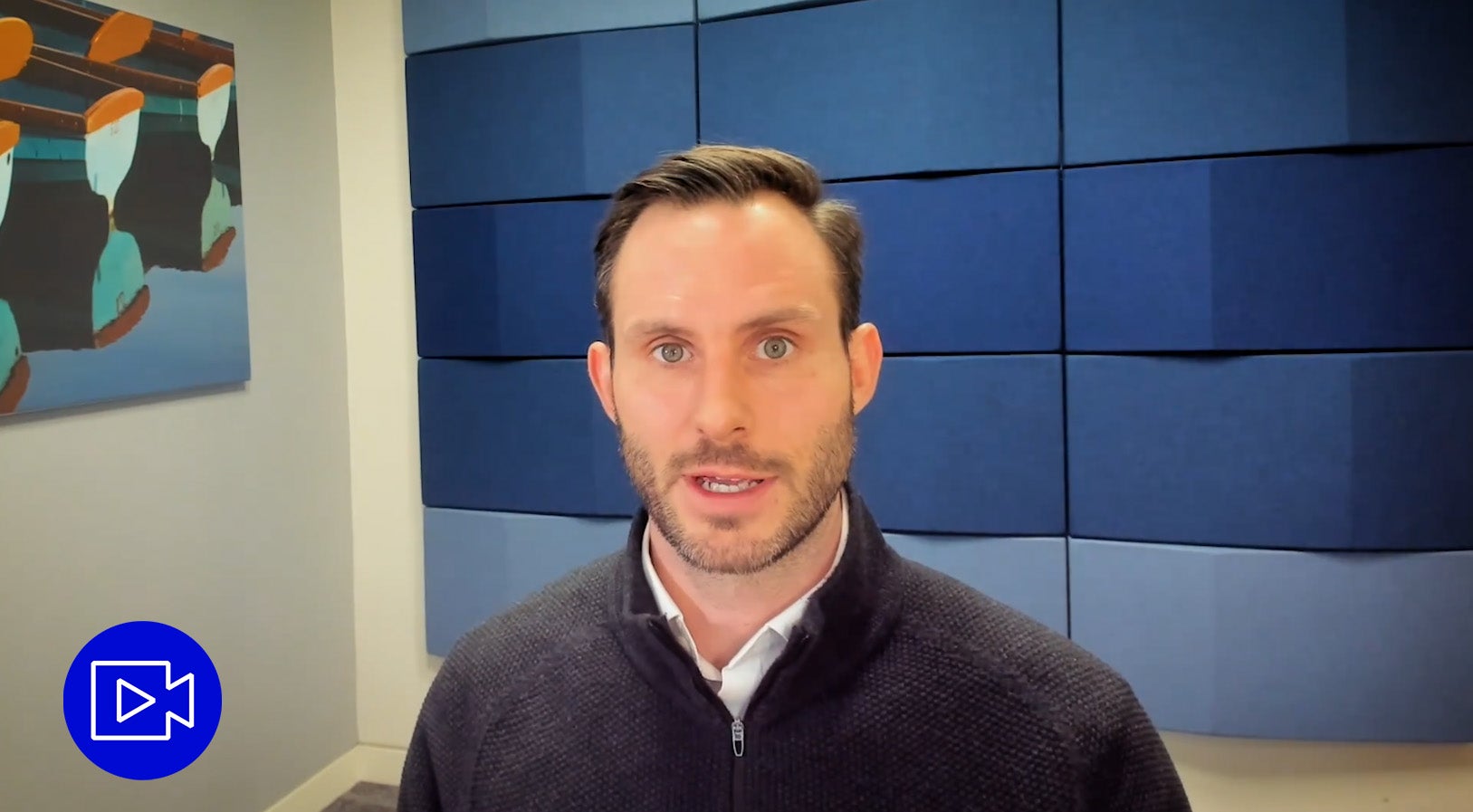
Equities Invesco Global Equity Income – video update
Key things impacting the outlook for global equities in 2025: Donald Trump, artificial intelligence (AI) and ‘hangover stocks’.

Through December, the equity markets struggled with the emergence of the Omicron variant of Covid-19. Whilst unequivocally more transmissible than previous variants, the key unknown was how severe the resulting symptoms would be, and therefore, the likely burden on health systems.
Thankfully, we’ve quickly found the worst-case scenarios obsolete, with symptoms relatively mild. Still, varying degrees of lockdown have been reinstated across Europe with international travel impeded and large numbers of employees forced into self-isolation. Supply chains and business activities have duly been impacted.
Inevitably, GDP will be affected. This will have a knock-on effect to earnings. The key question for us is whether the Omicron variant has the potential to destroy the positive outlook for earnings in 2022, and therefore, one of the key attractions of the asset class. In our view, there are some very valid pushbacks to this concern.
To start, consensus for 2022 is unusually conservative. Only 6% growth is currently expected, which is below the 10% normally pencilled for the year ahead. To us, many of the concerns underpinning these conservative estimates ignore the generally positive outlook for the global economy and high operating leverage of European corporates – notwithstanding the current Omicron variant, something we discuss below.
Looking at Covid-19 data since March 2020, it’s clear each new wave has had an incrementally lower impact on economic activity. In other words, the sensitivity to each new pandemic wave is reducing, and we’re learning to live with the virus. This time should be no different.
Source: Goldman Sachs Global Investment Research, Oxford University Blavatnik School of Government. As at 24 November 2021.
Looking at previous waves, it’s important to remember that any lost economic output from mobility being restricted, quickly bounced back as these restrictions were pared back. In hindsight, the overall impact on GDP over 6 to 12 months was relatively minor – less than 50bps of annualised growth.
If anything, what happens in this ‘wave’ should be less material than before, for the reasons outlined above. Ultimately, it’s important not to lose sight of the fundamentally positive outlook for the global economy.
European corporates are ideally placed to take advantage of a strong macro, given their cyclical exposure, high operating leverage and geographical diversification. So, even if Omicron lasts longer than we think, it should merely delay a pickup in earnings growth as opposed to knocking it off course.
It’s also worth noting that EPS growth has been consistently upgraded in 2021, despite the various restrictions in place and the time it took for most populations to get vaccinated. As it stands, European companies are on track to deliver year-on-year growth of 60% in 2021 compared to only 40% expected at the start of the year.
In response to the Omicron variant and the uncertainty it brings, European Equities sold off. The asset class has since recovered some of these losses, currently trading around the long-term average PE of 15x. At these levels, the key takeaway for us is that markets are reluctant to believe earnings can grow at all in 2022, providing more of an opportunity than anything else.
The same conservative approach to headline earnings growth in 2022 is also evident on a bottom-up basis. To us, there are several sectors which don’t fully capture the positive prospects and drivers.
Source: MSCI, IBES, Factset, Morgan Stanley Research as at 7 January 2022.
Banks (subsector of financials): Admittedly, we don’t expect the same level of EPS growth in 2022 after a 40% growth in 2021, with limited headroom for even lower provisions, but believe negative growth is far too pessimistic. Positive drivers include sizeable cost reduction plans, continued fee growth and buybacks being firmly turned on. Rightly, we don’t incorporate any benefit from higher yields yet, despite some stabilisation in net interest income last year. However, we recognise this as a potential source of further upside in the future.
Autos (subsector of consumer discretionary): After a huge recovery in earnings in 2021, analysts are, in comparison, expecting only subdued earnings progress in 2022. Underpinning this is a reluctance to believe OEMs can maintain any pricing discipline. This is despite ongoing supply chain shortages and 2022 volumes assumed to be still 12-13% below 2017 peak! This caution is also evident in analysts not giving the full benefit of the various cost savings plans in place.
Energy is another area, where we believe consensus forecasts are too low. Perhaps, this seems aggressive to some, with double digit growth already factored in. Where could surprises come from? Scrutinising analysts’ expectations, it looks like many expect oil/gas prices to be maintained in H1, but fall away sharply in the second half of 2022, impacting earnings.
To us, this is far from certain. For gas, low inventory levels in Europe will take time to replenish, even more so if there is cold weather during this winter. As for oil, we note that supply has reacted quickly, owing to the climate agenda versus the demand reaction due to take place only over the medium to long term. We continue to expect short-term demand recovery as the pandemic conditions normalise.
Overall, low earnings expectations combined with an attractive valuation entry point, translates into a supportive investment case for European Equities, and particularly for the less favoured sectors and stocks. Our strategies are therefore positioned to not only capture the positive GDP outlook, a key factor in our ‘cyclical value tilt’, but also where we see clear idiosyncratic drivers.
In our view, it’s incompatible to expect such strong economic growth in 2022 whilst forecasting minimal progress in earnings. Even if the Omicron variant turns out worse than we expect, acting as a drag on earnings, you’re still left with an asset class on an attractive valuation with very conservative growth expectations.

Key things impacting the outlook for global equities in 2025: Donald Trump, artificial intelligence (AI) and ‘hangover stocks’.

In this video, fund manager Martin Walker shares his thoughts on the challenges of the last quarter and his outlook for UK Equities.

India is one of the strongest growing economies in Asia, driven by digital transformation, robust consumption and expanding exports. Find out more.


Sign up to receive the latest insights from Invesco’s global team of experts and details about on demand and upcoming online events.
The value of investments and any income will fluctuate (this may partly be the result of exchange-rate fluctuations) and investors may not get back the full amount invested.
This is marketing material and not intended as a recommendation to buy or sell any particular asset class, security or strategy. Regulatory requirements that require impartiality of investment/investment strategy recommendations are therefore not applicable nor are any prohibitions to trade before publication.
Where individuals or the business have expressed opinions, they are based on current market conditions, they may differ from those of other investment professionals and are subject to change without notice.